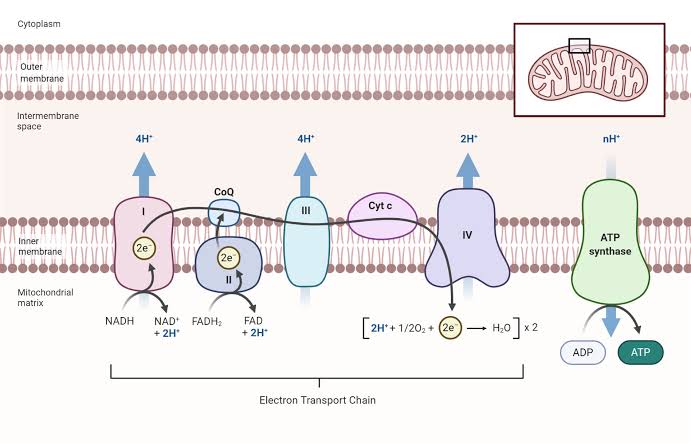
Post-Transcriptional Modifications of the Primary Transcript and Their Significance
Post-transcriptional modifications are crucial processes that occur after the synthesis of the primary RNA transcript (pre-mRNA) in eukaryotic cells. These modifications enhance the stability, transport, and translation of mRNA. The primary types of post-transcriptional modifications include 5’ capping, polyadenylation, and splicing. Each modification plays a significant role in gene expression regulation.
1. 5’ Capping
The addition of a 7-methylguanylate (m7G) cap to the 5’ end of the pre-mRNA is one of the first modifications that occurs shortly after transcription begins. This capping process involves several enzymatic steps:
- Enzymatic Addition: The cap is added co-transcriptionally by a guanylyl transferase enzyme.
- Methylation: Following the addition of the cap, methyltransferases add methyl groups to the guanine base and to the ribose sugar of the first few nucleotides.
Significance:
- Stability: The 5’ cap protects mRNA from degradation by exonucleases.
- Translation Initiation: It is recognized by the ribosome as part of the initiation complex for translation.
- Nuclear Export: The cap facilitates the export of mRNA from the nucleus to the cytoplasm.
2. Polyadenylation
Polyadenylation involves adding a stretch of adenine nucleotides (poly-A tail) to the 3’ end of pre-mRNA. This process occurs after transcription termination and involves several key steps:
- Cleavage: An endonuclease cleaves the pre-mRNA downstream of a specific sequence known as the polyadenylation signal (AAUAAA).
- Poly-A Polymerase Action: Poly-A polymerase then adds approximately 200 adenine residues to form a poly-A tail.
Significance:
- Stability: The poly-A tail enhances mRNA stability and protects it from degradation.
- Translation Efficiency: It aids in efficient translation by promoting ribosome binding.
- Nuclear Export: Like the 5’ cap, it also plays a role in exporting mRNA from the nucleus.
3. Splicing
Splicing is a critical modification where introns (non-coding regions) are removed from pre-mRNA, and exons (coding regions) are joined together. This process is facilitated by a complex known as the spliceosome, which consists of small nuclear RNAs (snRNAs) and protein components.
Significance:
- Coding Sequence Formation: Splicing generates mature mRNA that contains only coding sequences necessary for protein synthesis.
- Alternative Splicing: This allows for multiple protein isoforms to be produced from a single gene, increasing protein diversity and functional complexity within cells.
4. Other Modifications
In addition to these primary modifications, there are other post-transcriptional modifications such as RNA editing (where nucleotide sequences are altered), methylation at various positions on RNA molecules, and incorporation of non-coding RNAs that can influence gene expression.
Overall Significance:
The collective impact of these post-transcriptional modifications is profound:
- They ensure that mRNAs are stable, properly processed, and efficiently translated into proteins.
- They play essential roles in regulating gene expression at multiple levels.
These processes highlight how intricate cellular machinery operates to fine-tune gene expression in response to developmental cues or environmental changes.
Structure of Primary Transcript
The primary transcript, also known as the precursor mRNA (pre-mRNA), is a crucial intermediate in the process of gene expression. It is synthesized from DNA during transcription and undergoes several modifications before it becomes a mature messenger RNA (mRNA) that can be translated into proteins. The structure of the primary transcript is characterized by several key features:
- 5’ Cap: The primary transcript begins with a 5’ cap, which is a modified guanine nucleotide added to the beginning of the RNA molecule. This cap serves multiple functions: it protects the RNA from degradation by exonucleases, aids in ribosome binding during translation, and plays a role in nuclear export.
- Coding Sequence (Exons): The primary transcript contains coding sequences known as exons, which are segments of RNA that will be retained in the mature mRNA. Exons are interspersed with non-coding sequences called introns.
- Introns: Introns are non-coding regions within the primary transcript that are transcribed but must be removed during RNA processing. These sequences do not contribute to the final protein product and are excised through a process called splicing.
- Polyadenylation Signal: Near the 3’ end of the primary transcript, there is typically a polyadenylation signal (AAUAAA) that signals for the addition of a poly(A) tail. This tail consists of a long stretch of adenine nucleotides and serves to stabilize the mRNA and facilitate its export from the nucleus.
- 3’ Poly(A) Tail: Following cleavage at the polyadenylation site, a series of adenine nucleotides are added to form the poly(A) tail. This modification enhances mRNA stability and influences its translation efficiency.
- Transcriptional Start Site (TSS): The region upstream of the coding sequence includes regulatory elements such as promoters that dictate where transcription begins. The TSS marks the point at which RNA polymerase starts synthesizing RNA based on the DNA template.
- Untranslated Regions (UTRs): Both ends of the coding sequence contain untranslated regions (UTRs). The 5’ UTR precedes the start codon, while the 3’ UTR follows it and extends to include elements important for regulation of translation and stability. In
In summary, the structure of a primary transcript is complex and involves various components essential for its function in gene expression. Understanding these features provides insight into how genes are regulated at both transcriptional and post-transcriptional levels.
Introns and Exons
Exons and introns are two distinct types of sequences found within genes in eukaryotic organisms. Exons are the coding sequences that directly contribute to the formation of proteins, while introns are non-coding sequences that interrupt the coding regions.
- Exons: These segments of DNA or RNA are expressed as they contain the information necessary for protein synthesis. After transcription, exons remain in the mature mRNA molecule and are translated into amino acids during protein biosynthesis.
- Introns: In contrast, introns do not code for proteins. They are transcribed into precursor mRNA (pre-mRNA) but are removed during a process called splicing before translation occurs. This removal is crucial to ensure that only the correct coding sequences (exons) are included in the final mRNA product.
Structure and Function
The structure of genes in eukaryotes typically consists of alternating exons and introns. The presence of introns allows for greater flexibility in gene expression and regulation.
- Splicing Process:
- The splicing process is facilitated by a complex known as the spliceosome, which recognizes specific nucleotide sequences at the boundaries of introns and exons.
- During splicing, intron sequences are excised from pre-mRNA, allowing exons to be joined together to form a continuous coding sequence.
- Conservation and Variation:
- Exon sequences tend to be highly conserved across different species due to their essential role in coding for proteins.
- In contrast, intron sequences can vary significantly between species and even among individuals within a species, reflecting their less critical role in direct protein coding.
Evolutionary Significance
Introns have been proposed to play several important roles in evolution:
- Gene Regulation: Intronic regions can contain regulatory elements that influence gene expression.
- Alternative Splicing: The presence of introns allows for alternative splicing events, where different combinations of exons can be joined together to produce multiple protein variants from a single gene.
- Evolutionary Innovation: Introns may facilitate genetic recombination and innovation by allowing new combinations of exonic sequences.
The evolutionary history suggests that introns were present in early forms of life but were lost in some prokaryotic organisms due to selective pressures favoring rapid replication.
Types of Introns
Introns can be classified based on their splicing mechanisms:
- Self-Splice Introns: These can catalyze their own removal without the need for spliceosomal machinery.
- Spliceosomal Introns: These require the spliceosome for their removal during mRNA processing.
Additionally, there are various classes based on sequence characteristics (e.g., GT-AG or AT-AC intron types).
Applications in Genomics
Understanding exons and introns has significant implications in genomics:
- Exome Sequencing: This technique focuses on sequencing only the exon regions of genes, which is particularly useful for identifying mutations associated with diseases.
- Research into Genetic Disorders: By studying both exonic mutations (which affect protein function) and intronic variations (which may influence gene regulation), researchers can gain insights into complex genetic disorders.
In summary, exons serve as vital components encoding proteins while introns play essential roles in gene regulation, evolution, and genomic diversity through processes like alternative splicing.
Clinical Significance of Abnormal Post-Transcriptional Modifications
Post-transcriptional modifications (PTMs) are critical processes that occur after the transcription of RNA but before it is translated into proteins. These modifications can include capping, polyadenylation, splicing, and editing. Abnormalities in these processes can lead to significant clinical implications, affecting gene expression and protein function.
1. Types of Post-Transcriptional Modifications
The primary types of post-transcriptional modifications include:
- 5’ Capping: This modification involves the addition of a 7-methylguanylate cap to the 5’ end of mRNA, which is essential for stability, nuclear export, and translation initiation.
- Polyadenylation: The addition of a poly(A) tail at the 3’ end enhances mRNA stability and regulates its translation.
- Splicing: This process removes introns from pre-mRNA and joins exons together. Alternative splicing can produce multiple protein isoforms from a single gene.
- RNA Editing: This involves the alteration of nucleotide sequences within an RNA molecule, which can affect protein coding potential.
2. Clinical Implications of Abnormal PTMs
Abnormal post-transcriptional modifications can lead to various diseases and disorders:
- Cancer: Many cancers exhibit altered splicing patterns due to mutations in splicing factors or regulatory elements. For instance, aberrant splicing can result in the production of oncogenic proteins or loss of tumor suppressor functions. Studies have shown that specific splice variants are associated with poor prognosis in several cancer types (e.g., breast cancer).
- Neurodegenerative Diseases: Disorders such as Alzheimer’s disease and amyotrophic lateral sclerosis (ALS) have been linked to abnormal RNA processing. For example, misregulated splicing has been implicated in the pathogenesis of ALS through the production of toxic protein isoforms.
- Genetic Disorders: Certain inherited conditions are caused by mutations affecting splicing or other PTMs. For instance, spinal muscular atrophy is linked to defects in SMN1 gene splicing due to loss-of-function mutations.
- Infectious Diseases: Viral infections can hijack host cell machinery to alter post-transcriptional modifications for their benefit. Some viruses induce changes in host mRNA processing that promote viral replication while inhibiting host immune responses.
3. Diagnostic and Therapeutic Potential
Understanding abnormal post-transcriptional modifications opens avenues for diagnostics and therapeutics:
- Biomarkers: Altered expression levels or patterns of specific splice variants can serve as biomarkers for early detection or prognosis in diseases like cancer.
- Targeted Therapies: Therapeutic strategies targeting specific splicing events or modifying RNA processing pathways are being explored. Antisense oligonucleotides (ASOs) are one approach being used to correct splicing defects in genetic disorders.
In summary, abnormal post-transcriptional modifications have profound clinical significance across various diseases by influencing gene expression regulation and protein functionality. Their study not only aids in understanding disease mechanisms but also provides potential pathways for novel diagnostic tools and therapeutic interventions.







